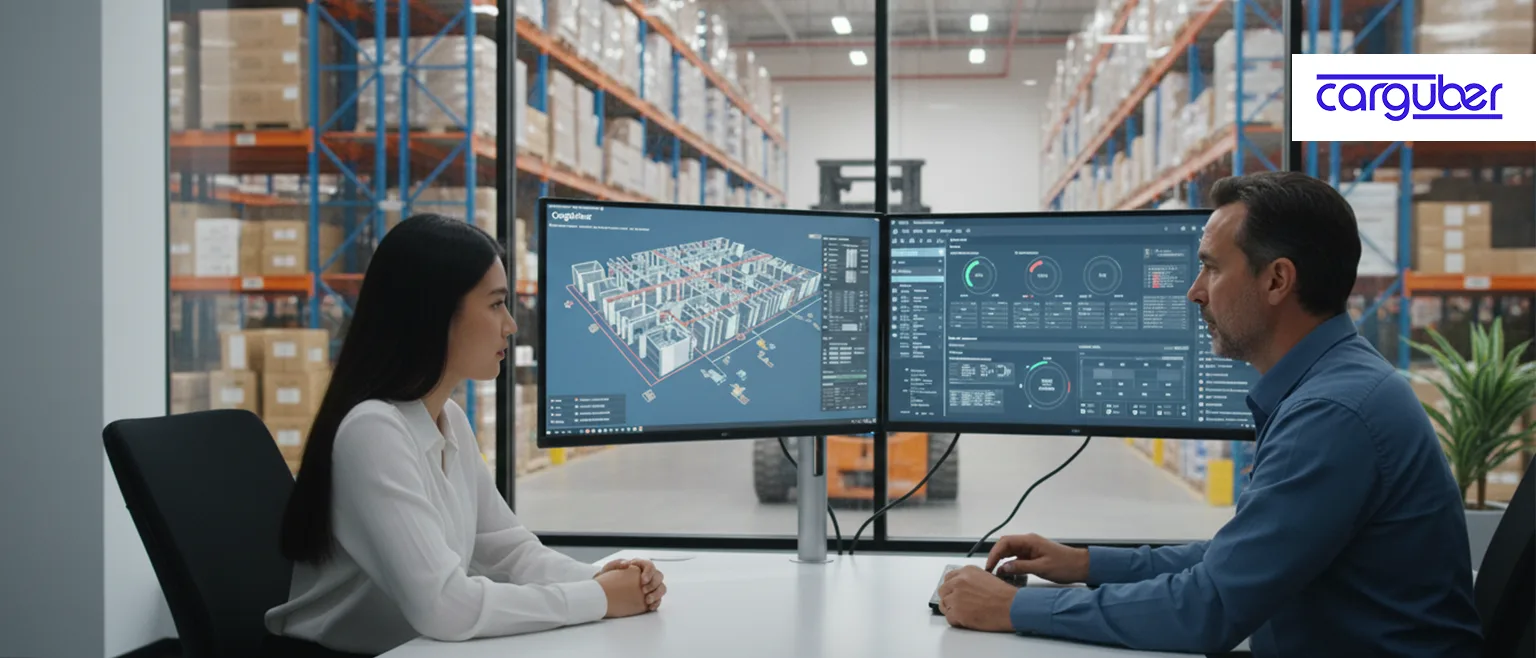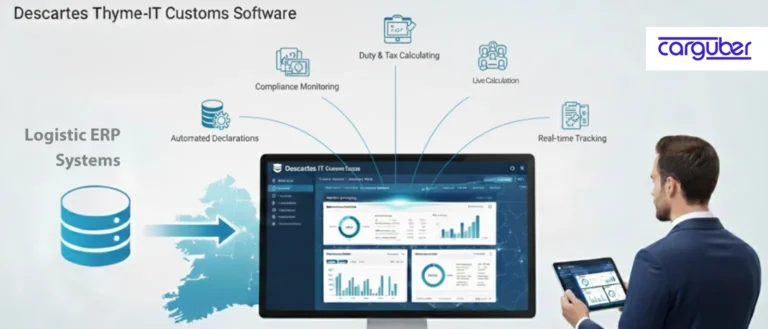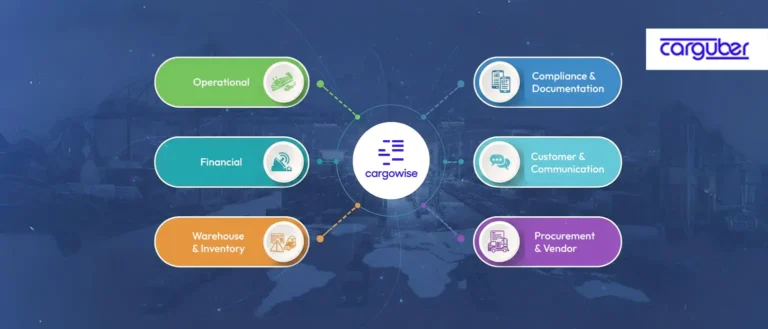How Can You Optimize CargoWise for Warehousing Operations?
Warehousing isn’t just about storing goods; it’s a dynamic, high-volume environment where every delay can disrupt the supply chain. As freight volumes increase and customer expectations grow, logistics providers are turning to CargoWise to simplify warehouse operations and gain real-time control.
But simply having CargoWise WMS (Warehouse Management System) in place isn’t enough. Many companies utilize only a small portion of their capabilities, which can lead to unforeseen errors, inefficiencies, and slow turnarounds. If you’re looking to optimize CargoWise for the warehouse, the goal is clear: make the system work harder, faster, and smarter without adding complexity.
Let’s explore how our CargoWise support & helpdesk can optimize CargoWise for warehousing operations and maximize its full potential.
Why does Warehousing Optimization Matter?
While CargoWise is well known for handling freight forwarding, customs, and transport, its warehousing features are often underutilized.
CargoWise WMS can:
- Improve inventory accuracy across multiple warehouses
- Eliminate manual data entry and picking errors
- Automate inbound and outbound processing
- Integrate seamlessly with transport, customs, and billing modules
- Provide real-time warehouse visibility for all stakeholders
Without proper CargoWise configuration, warehouses often return to spreadsheets, manual pick lists, and workarounds, ruining the purpose of digital transformation.
Typical Warehouse Challenges in CargoWise
Before implementing optimization strategies, it’s crucial to address the common problems that arise when CargoWise warehousing isn’t properly configured. Unstructured inventory locations lead to delays in picking and put-away, while manual order processing slows down workflows and increases fulfillment errors.
Without scanning integration, teams often rely on paper-based processes that hinder real-time visibility. Disconnected systems can further create gaps between inventory, transport, and billing data, disrupting operational accuracy. Inaccurate or incomplete reporting then conceals inefficiencies, delaying data-driven decisions. These challenges can significantly impact logistics performance, but with the right CargoWise setup, they can be quickly resolved and transformed into efficiency gains.
Optimize CargoWise for Warehousing Operations by Carguber
Efficient warehouse operations depend on precision, structure, and real-time data flow. CargoWise offers powerful Warehouse Management System (WMS) capabilities, but realizing its full potential requires the right configuration. At Carguber, we help logistics businesses unlock these efficiencies with tailored CargoWise setup and optimization strategies.
1. Map and Structure Your Warehouse Layout in Detail
CargoWise enables you to digitally mirror your physical warehouse, ensuring every zone, rack, and bin is accounted for. However, when zone classifications are poorly defined, teams waste valuable time locating goods, causing operational delays.
Our optimization approach includes:
- Setting up zones, paths, racks, levels, and bins to match real layouts.
- Applying ABC analysis to assign fast-moving goods to high-access areas.
- Implementing explicit put-away and picking rules.
- Assigning storage types (pallet, carton, unit) for optimal space use.
A structured digital layout ensures smoother automation and minimizes time spent on the warehouse floor.
2. Automate Inbound and Outbound Workflows
Manual processes increase the risk of errors and delays. CargoWise WMS allows complete automation for inbound and outbound operations when configured correctly.
Key automations we enable:
- Automatic GRN (Goods Receipt Note) creation using barcode scanning.
- Pre-planned inbound scheduling to prepare the warehouse for arrivals.
- Pick-and-pack protocols aligned with customer profiles and SLAs.
- Consolidated shipment planning to minimize transport costs.
Automation minimizes manual effort, prevents duplication, and accelerates turnaround times.
3. Integrate Scanning and Mobile Devices
If your warehouse teams are still using manual pick lists, it’s time to enable scanning. CargoWise supports RF scanning for real-time updates on stock movement, picking, and order fulfillment.
Best practices include:
- Using handheld RF devices for real-time barcode scanning.
- Enabling automatic inventory updates upon scanning.
- Validating goods, quantity, and location instantly.
- Assigning warehouse tasks directly to mobile devices.
This integration ensures real-time visibility for warehouse managers and customer service teams, improving accuracy and responsiveness.
4. Set Up Smart Task Management and Alerts
To operate efficiently, warehouse staff need clear visibility of what to do, when, and in what priority. CargoWise provides tools to manage warehouse workflows intelligently.
How we implement:
- Creating task lists for picking, packing, dispatching, and counts.
- Setting automatic alerts for delays or SLA breaches.
- Tracking completion rates by user or team.
- Monitoring milestones to resolve process bottlenecks.
Effective task management boosts productivity and ensures on-time performance.
5. Connect Warehousing with Freight and Finance Module
Warehouse operations are interconnected with freight and finance functions. CargoWise seamlessly links these modules to streamline logistics execution.
We configure integrations to:
- Synchronize warehouse events with freight movements.
- Auto-trigger customs and documentation workflows.
- Link storage and handling activities to billing lines.
- Align warehouse data with sales order statuses.
This connectivity ensures operational alignment and end-to-end visibility.
6. Enable Real-Time Inventory Visibility
Inventory accuracy is critical for customer satisfaction and financial control. CargoWise provides precise inventory tracking tools, but only when properly set up.
Carguber’s enhancement methods:
- Enabling batch and serial number tracking for high-value or regulated goods
- Automating cycle counting tasks to maintain accuracy without big interruptions.
- Categorizing stock as available, allocated, damaged, or on hold.
- Set up customer portal access to inventory for 3PL or client warehouses.
This real-time visibility allows sales, operations, and customers to make informed decisions without the need for reports. Along with that, an effective BI solution helps to optimize inventory and warehouse operations while also improving decision-making.
7. Generate Actionable Warehouse Reports
Operational success depends on data, and CargoWise lets you build detailed reports and dashboards for warehousing.
Recommended reports include:
- Inventory aging by SKU (Stock Keeping Unit) or location
- Order fulfillment times vs customer SLA
- Picking productivity by user or shift
- Stock discrepancies and variance logs
- Inbound delay tracking by supplier or carrier
These reports go beyond monitoring; they help identify inefficiencies, improve processes, and drive continuous optimization.
Conclusion
CargoWise has the potential to transform your warehouse from a traditional cost center to a true performance driver, but only if it is properly configured, integrated, and automated. Begin with a well-organized layout and standardized processes, then enhance operations with automation, scanning integration, and cross-module connectivity among warehousing, transportation, customs, and finance.
At Carguber, we specialize in fine-tuning CargoWise WMS to meet the demands of real-world freight and logistics operations. Whether you’re a 3PL, freight forwarder, or logistics provider aiming to scale, our experts help you streamline warehouse performance without unnecessary complexity.
Ready to elevate your warehouse operations? Contact our CargoWise Consultants today and unlock seamless, efficient warehousing with our end-to-end CargoWise optimization services.









